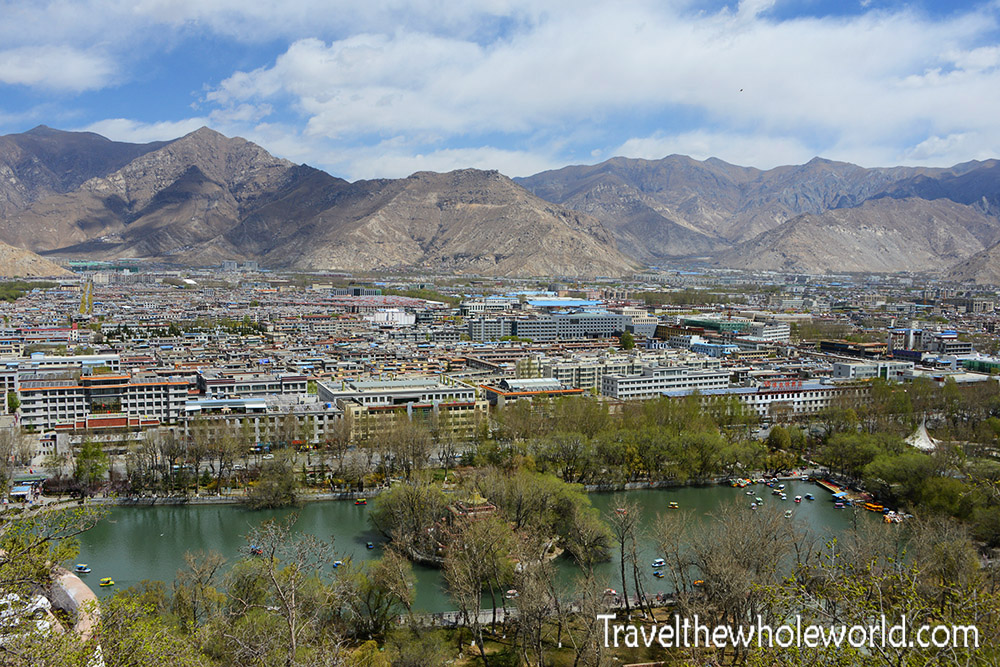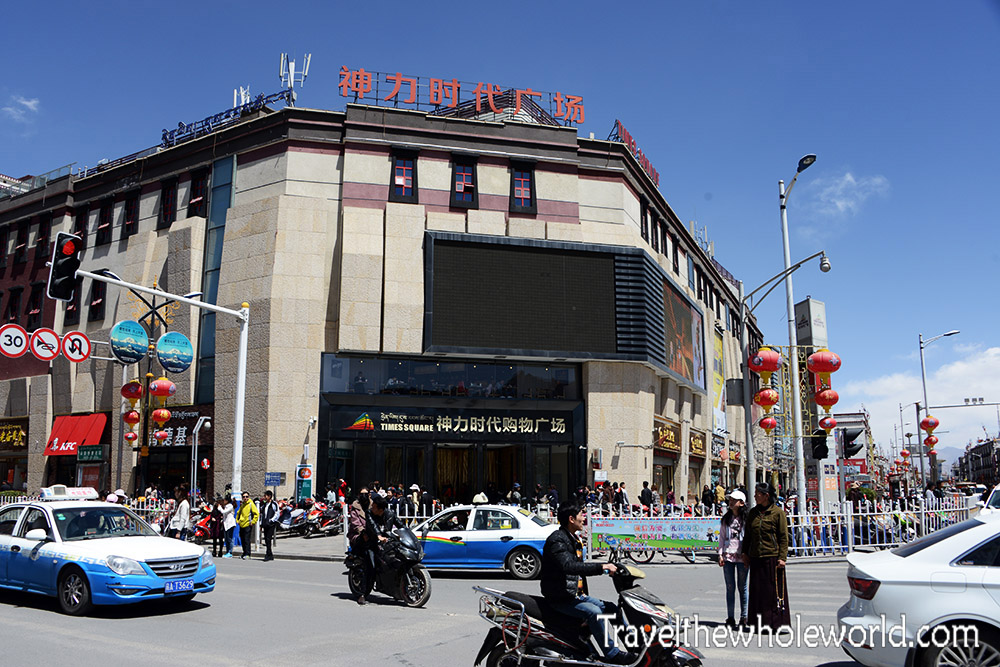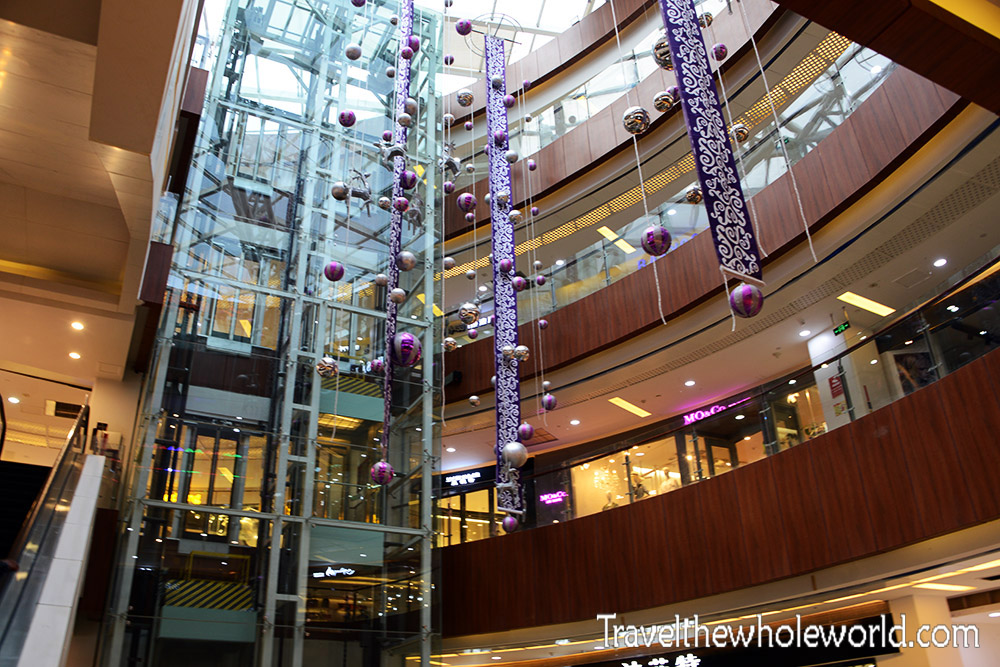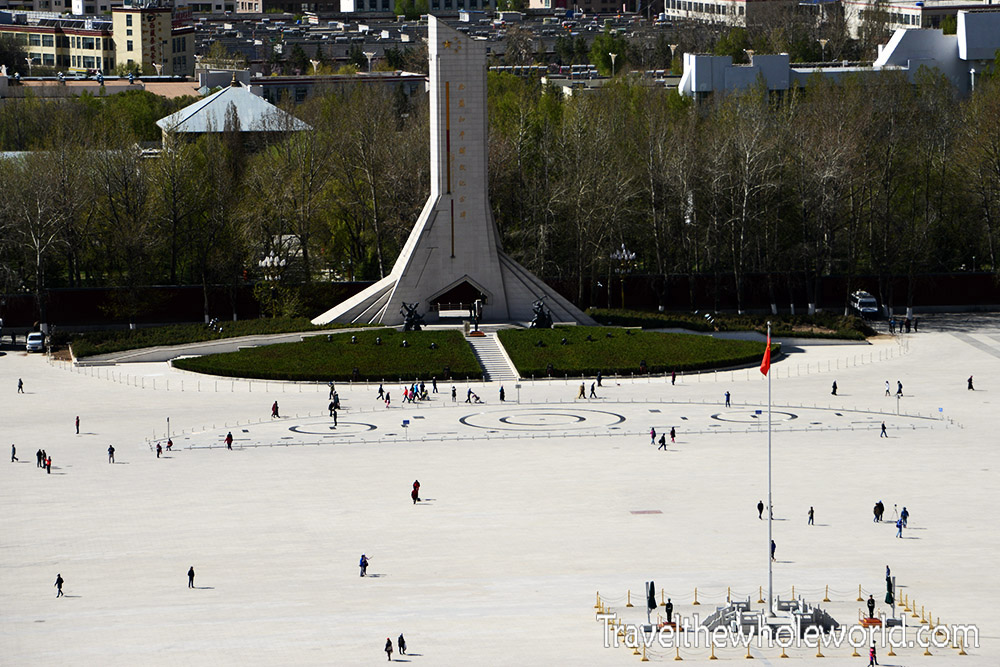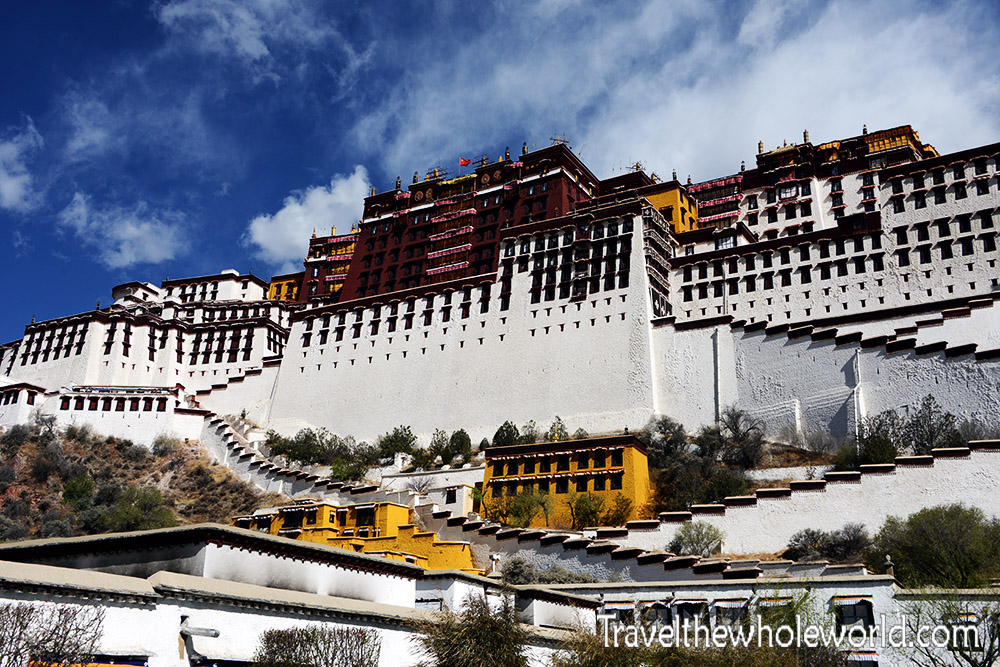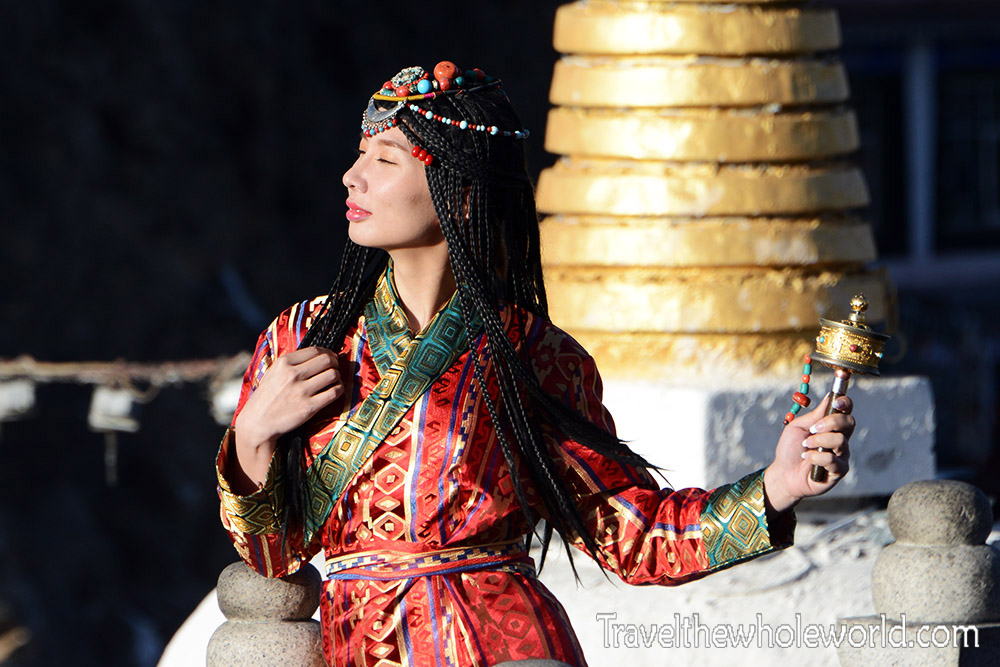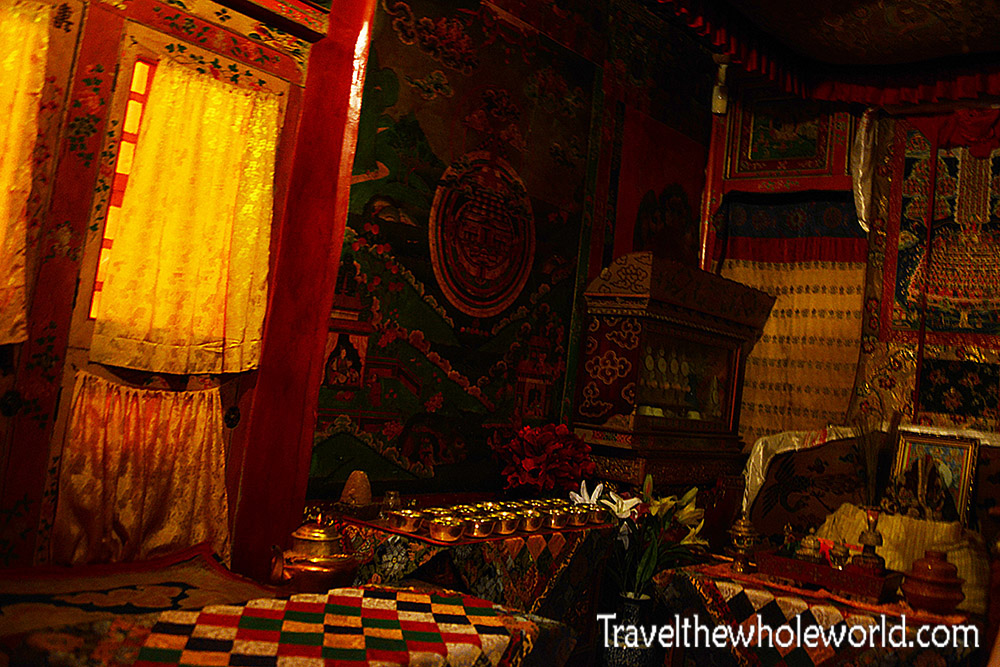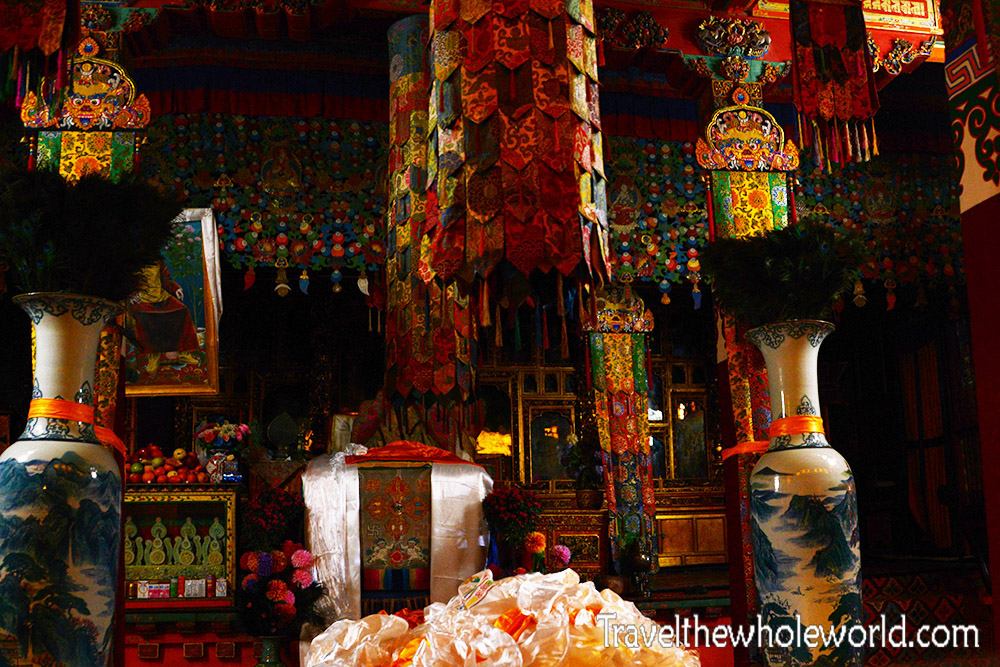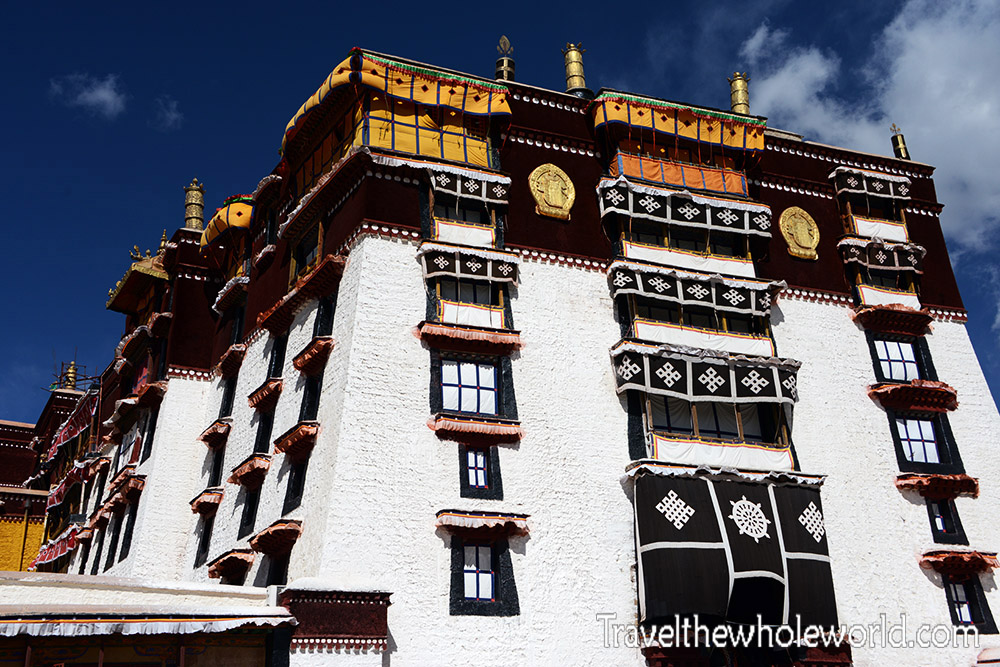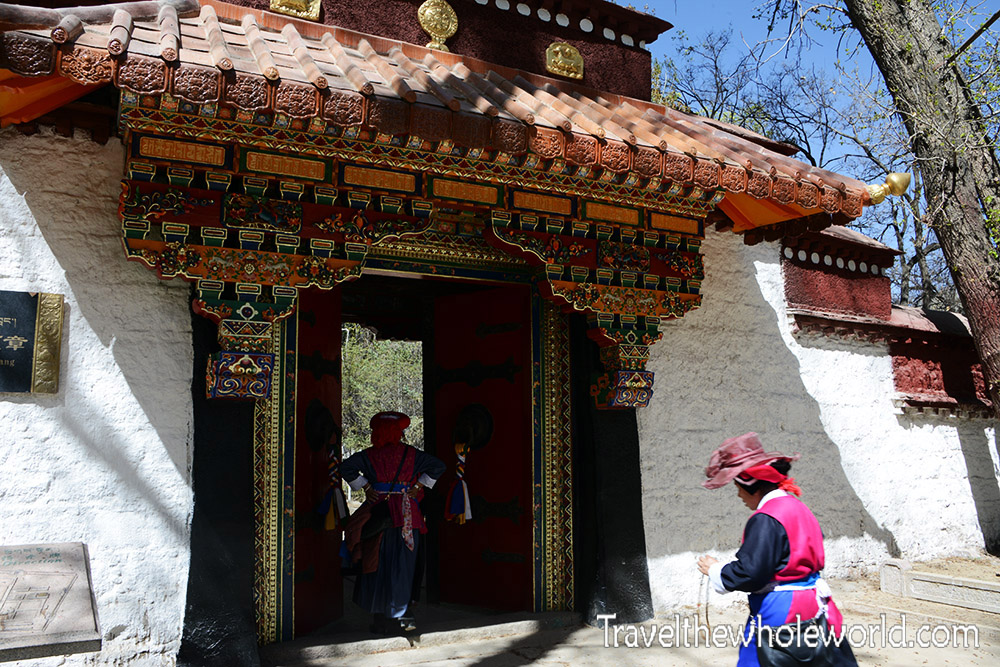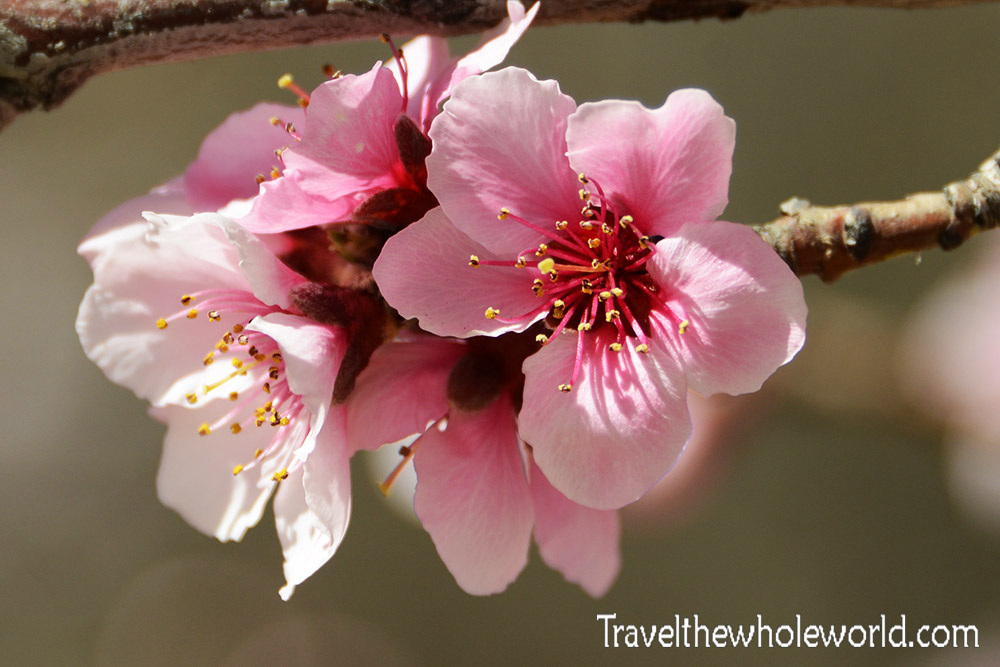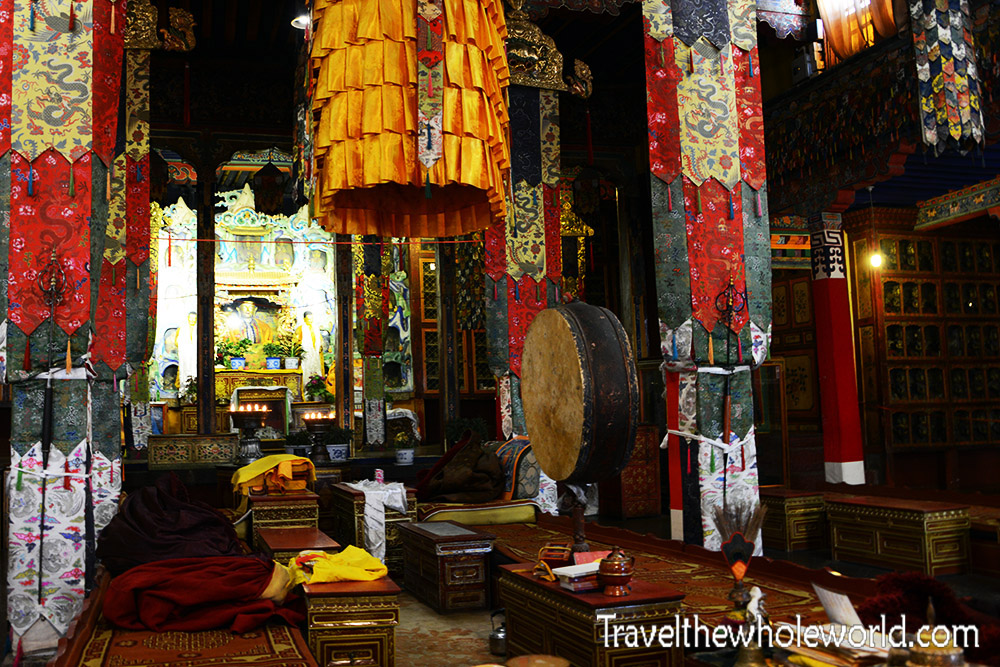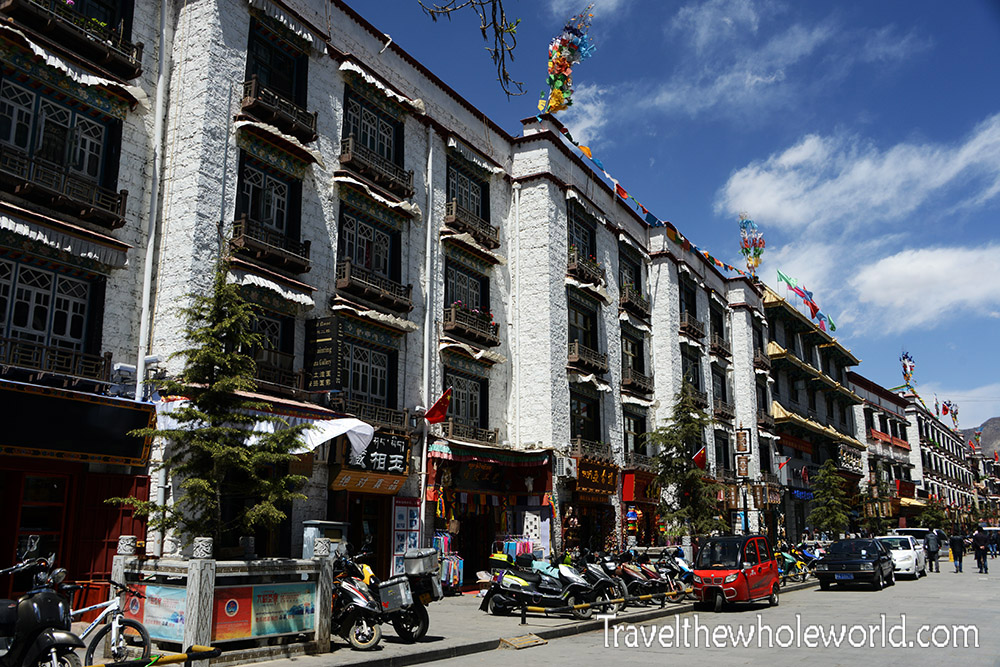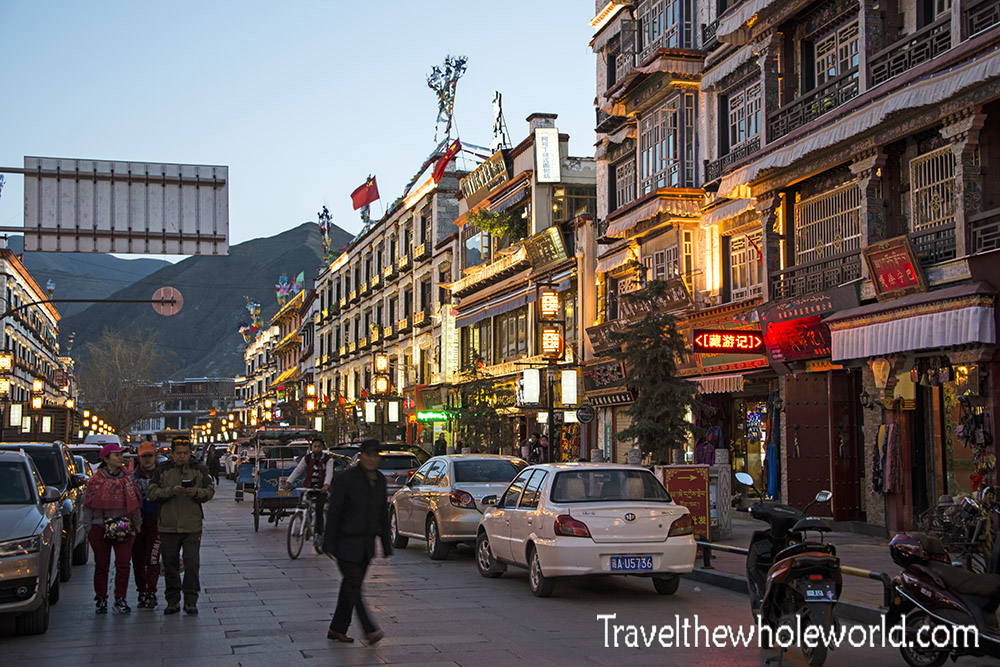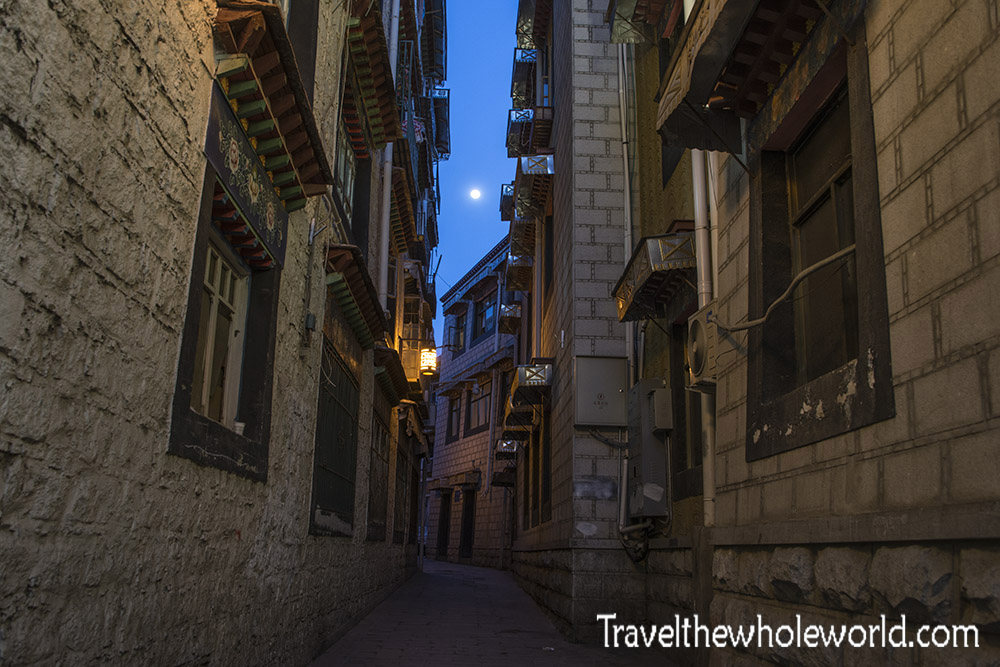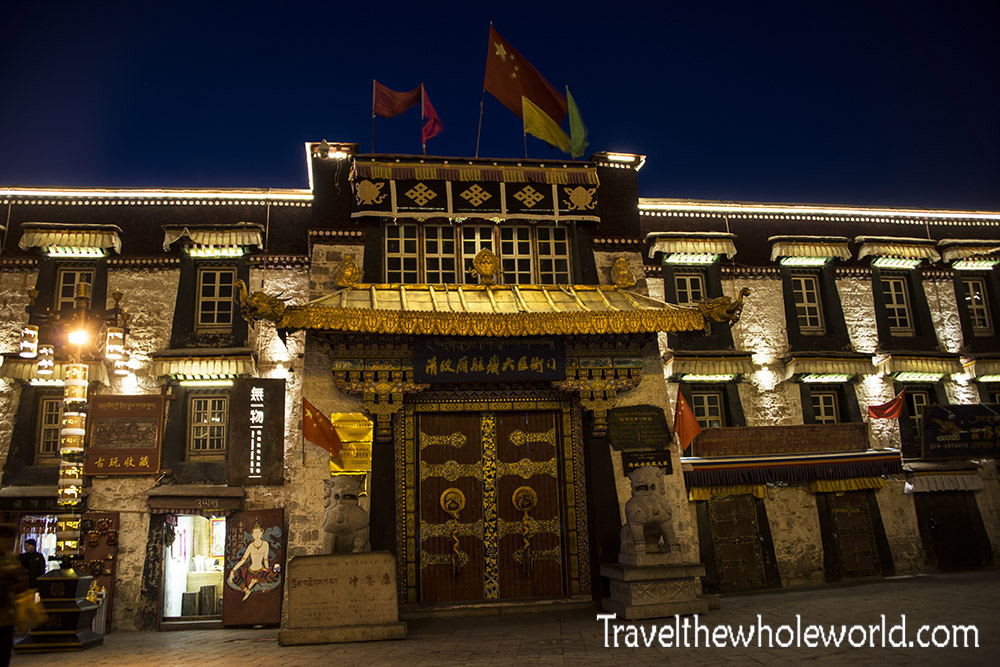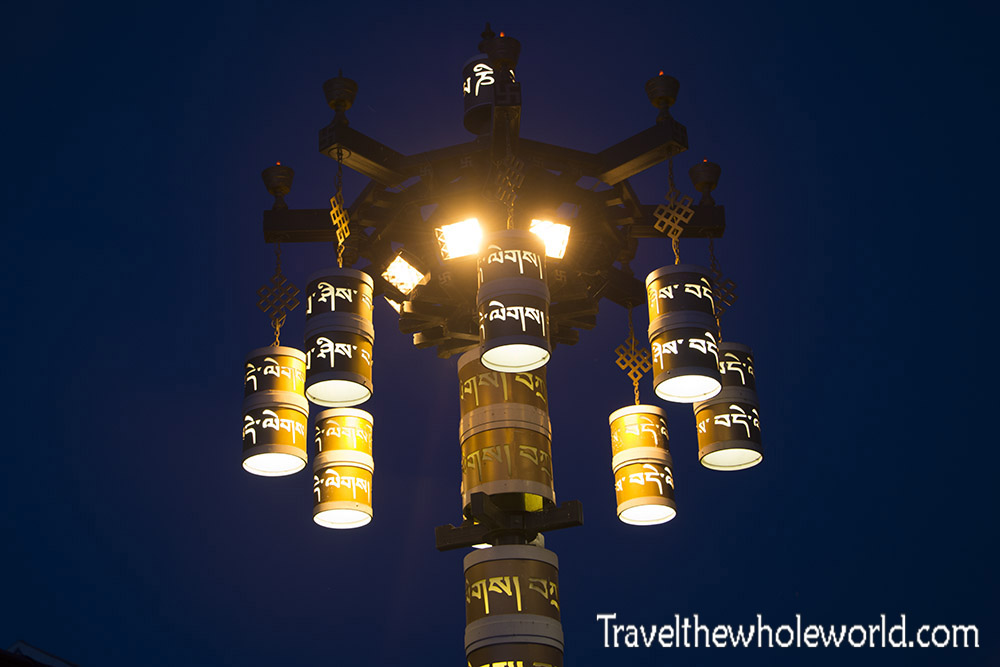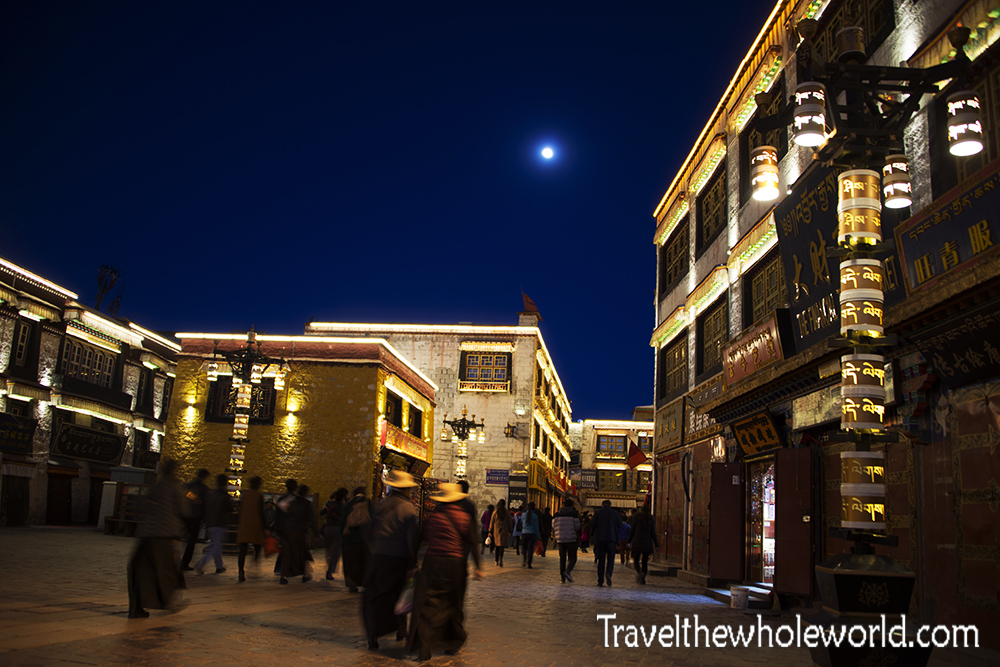Visiting Lhasa
Lhasa is one of the few cities in the world that seem to still be mysterious. If Tibet was an independent country, it would be landlocked with its capital one of the most isolated from any of the world’s oceans. With strict control from China, Tibet remains one of the harder places to visit and truly explore as a traveler. At first glance, Lhasa could like any other city in China aside from the missing skyscrapers. Lhasa is split into the Chinese side of the city which I’ll cover first, and then the Tibetan side which can trace its roots back well over 1,000 years.
The majority of the population in Lhasa is now the ethnic Hans; the Mandarin speaking people who come thousands of miles away from eastern China. The Chinese side as it’s called, features many typical sites you’d see in any eastern Chinese city. The photo above shows the main shopping mall which is called Times Square. Here you can find your modern coffee shops, clothing and electronic stores, and even a KFC. A photo below shows the inside of Lhasa’s Times Square.
Above is a memorial created by China that is called the “Peaceful Liberation of Tibet” memorial. China entered Tibet in the 1950’s, and after a few small skirmishes they successfully gained control of the country. Ever since then, their presence and influence has slowly increased, with the monument symbolically representing the full absorption of Tibet in 2002.
While there are a few museums and interesting things to do in the Chinese side of Lhasa, the old city is where you can find all the ancient culture and wonders of the Tibetan people. This incredible building above is known as the Potala Palace, sometimes referred to as the Winter Palace. I’d seriously go as far as to say this might be the most beautiful building I’ve ever seen in my life. It’s even more incredible when you consider the fact that it was built centuries ago and at an altitude of 12,000 feet (3,600 meters). The Potala Palace was the traditional home of the Dai Lamas for hundreds of years. While waiting for the sunset outside the palace, I saw this woman below dressed in traditional clothing.
Without exaggerating, there are several wings and over a thousand rooms within the massive Potala Palace. This makes it impossible for any visitor to see anything beyond a small glimpse of what’s really inside. The internal tour goes through several ancient rooms that have detailed descriptions. Above is one of the meeting rooms, where the former Dai Lamas would meet with guests and diplomats from around the world.
Above is another beautifully decorated room in the Potala Palace. We passed by several important rooms where photography was not allowed. One of these rooms was a darkly lit hallway decorated with Tibetan architecture. Along one side of the hallway was a massive wall with small candles and the occasional chanting monk. The other side held massive tombs of some of the former Dai Lamas from centuries past, guarded by giant Buddhas.
After touring the inside of the palace, the stairs lead you back outside to some areas near the roof of the enormous palace. Here was a large courtyard where ceremonies would take place and the Dai Lama would watch from this building above. I can’t emphasize how enormous this place is. Once you leave this courtyard you reenter the palace and continue through a maze of rooms and hallways until you come out at the highest floor. For some reason photography wasn’t allowed here, perhaps because this was one of the most important and sacred parts of the Winter Palace.
So if you’re like me and are curious if there is a Summer Palace then you are absolutely right. The Summer Palace occupies a large area with gardens like the spring flowers below, and several buildings. Unlike the Winter Palace, it’s more of a monastery spread out rather than a single massive building. Above shows a photo of some local Tibetan women entering part of the Summer Palace.
Like the winter palace, the summer palace also had beautifully decorated rooms with Tibetan style. Despite all the rooms and the space in the summer palace, there seemed to be very few monks h ere.
I preferred to spend my time exploring Lhasa’s old city on foot. The photos above and below show some of the Tibetan parts that were easily my favorite. I found old Lhasa to be one of the most unique cities in the world. Despite its large Chinese side, the Tibetan area seems to hold very little Chinese or western influence here. Nearly all the restaurants and shops were Tibetan owned and operated.
While exploring the old city’s alleys and shops I just happened to pass this alley while the full moon was up during one evening stroll. In person the full moon seemed large and dramatic, so my photo didn’t give the view much justice.
My main reasons for entering Tibet was for the purpose of attempting Mt. Everest. While in Lhasa I was here with my entire expedition. Many of them went to the Jokhang temple during the day and I ended up missing that excursion. Since our stay in Lhasa was essentially free time, I was able to visit by myself at night which I think is the best time. The Tibetans weren’t shy when it came to building, and this enormous temple is more of a large village. The building above was one of probably hundreds here.
The Jokhang temple is perhaps the most important and sacred temple in all of Tibet. Founded in the 7th century, the sprawling complex could certainly use a local guide to explain the history and structures here. I walked alone and just enjoyed taking in the scenery and people watching. At night the temple is lit by these electric powered lanterns. Below is a photo of crowds of Tibetans passing through the streets of Jokhang.
